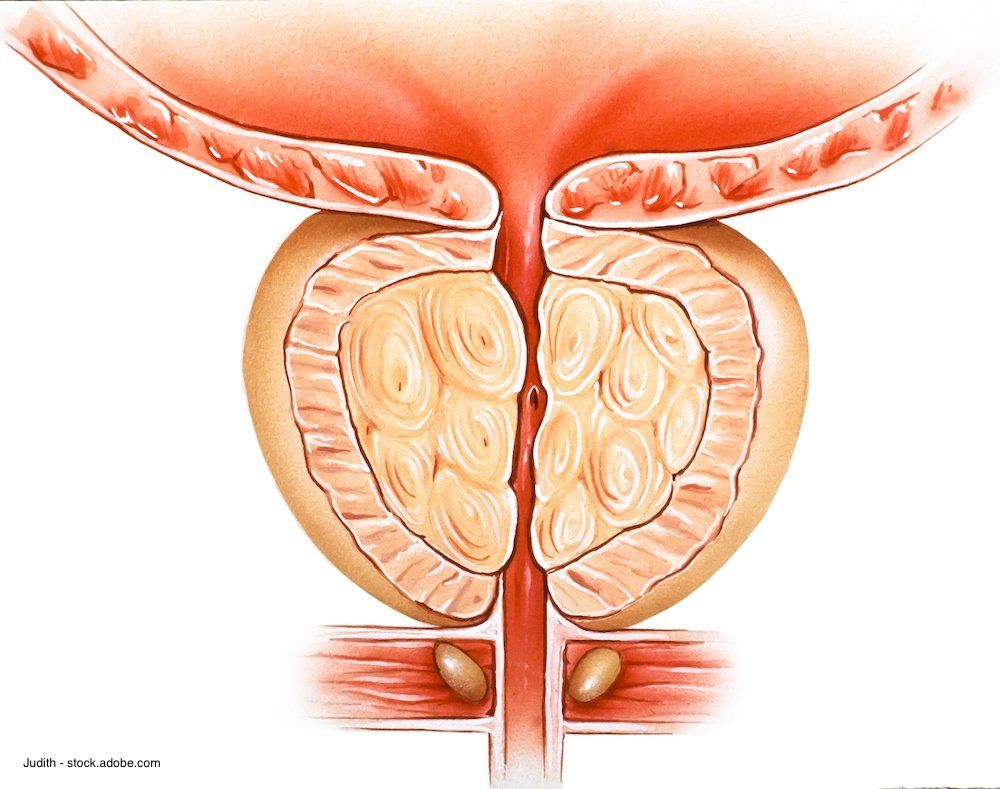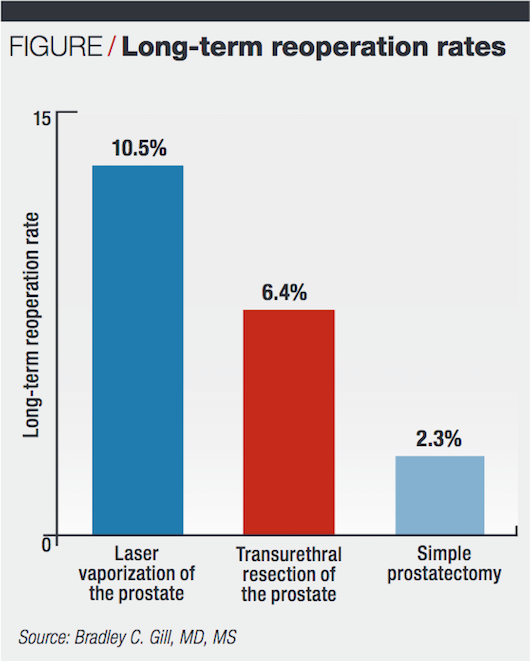Article
Durability of BPH treatments varies widely
Author(s):
The long-term durability of surgical modalities for management of BPH varies significantly, findings from a retrospective study suggest.
Judith - stock.adobe.com

The long-term durability of surgical modalities for management of BPH varies significantly, findings from a retrospective study suggest.
The study, presented at the AUA annual meeting in Chicago, included 4,985 men who underwent laser vaporization of the prostate (LVP), transurethral resection of the prostate (TURP), or simple prostatectomy (SP) as surgical management for BPH at a Cleveland Clinic location between 2001 and 2016. Of those men, 419 (8.4%) underwent a subsequent endoscopic operation at least 90 days after their index surgery.
Analyses of reoperations for each procedure showed that LVP was associated with the highest long-term reoperation rate (268/2,549, 10.5%) followed by TURP (148/2,304, 6.4%). The lowest rate of reoperation was observed among men who underwent SP (3/132, 2.3%).
A Kaplan-Meier survival analysis showed there was a statistically significant difference among the procedures in retreatment-free survival (p<.0001). In addition, findings from a Cox proportional hazards regression analysis that adjusted for between-group differences in baseline demographic and clinical characteristics found that primary BPH surgical modality was the only variable that was independently associated with need for repeat surgery, reported Bradley C. Gill, MD, MS, associate staff, department of urology, Cleveland Clinic.
Also see: New online men’s health sites divide opinion

“Variability in the durability of benefit after BPH surgery is an important issue to understand in the current era where the cost of health care is under the microscope, reimbursement is changing, and the population of men presenting for management of BPH is growing because of our aging population. Clinical trials, however, generally report only short-term or intermediate-term outcomes,” Dr. Gill told Urology Times.
“Although our study has some limitations and the shared decision-making process should also factor in other considerations, we believe that our findings on relative durability of the various surgical options for BPH represent information that can be useful for patient counseling.”
Having an electronic medical record system that dates back over a decade and a regional health care system capturing a large and diverse patient population provided an excellent opportunity to study the durability of BPH surgeries, said Dr. Gill.
The study population had a median follow-up of 26.5 months. For men who had a reoperation, the median interval between the primary and subsequent surgery was 19.5 months.
Next: SP patients 72% less likely to need reoperationSP patients 72% less likely to need reoperation
The Cox proportional regression analysis found that compared to men who underwent LVP, men were 28% less likely to need a reoperation if they had TURP as their index surgery and 72% less likely if they underwent SP. Patient age, smoking history, and various comorbidities did not predict risk of reoperation.
Read: What urologists can do to educate male patients
Dr. Gill acknowledged that the findings of the research need to be interpreted with its limitations kept in mind. He noted that the technology for LVP evolved greatly over the study period, meaning that the reported reoperation rate for the procedure represents all generations of the laser.

More importantly, the regression analysis did not account for certain factors that may be associated with longevity of benefit such as prostate size or procedure duration, baseline symptom severity, and baseline flow rate or urinary function.
“On the other hand, our study did not select patients based on specific characteristics. Thus, our population represents a fairly heterogeneous group of men undergoing surgery for management of BPH, and that may improve the generalizability of its results,” Dr. Gill said.
Newsletter
Stay current with the latest urology news and practice-changing insights — sign up now for the essential updates every urologist needs.













